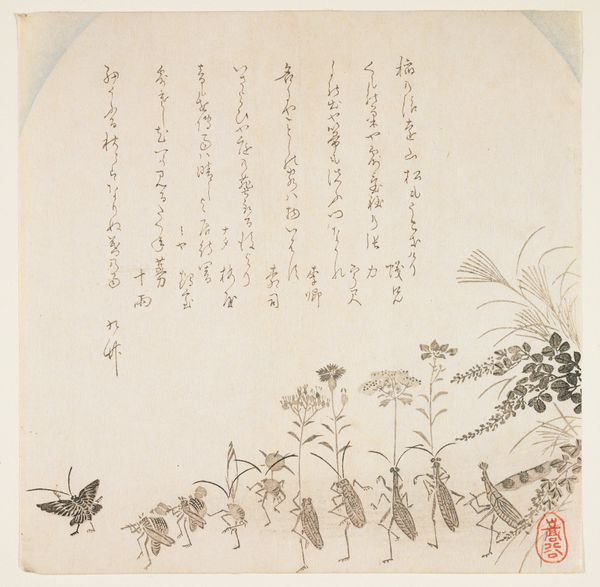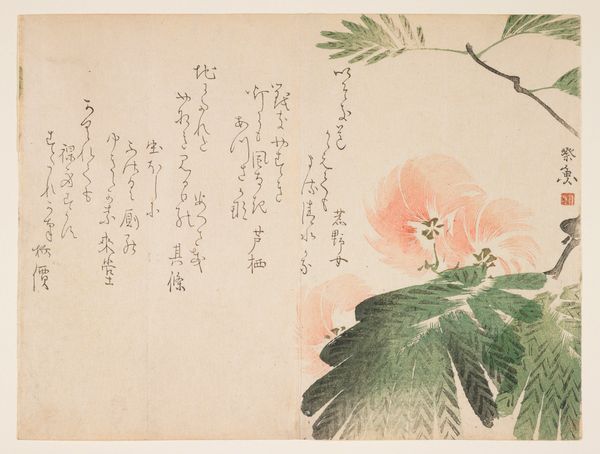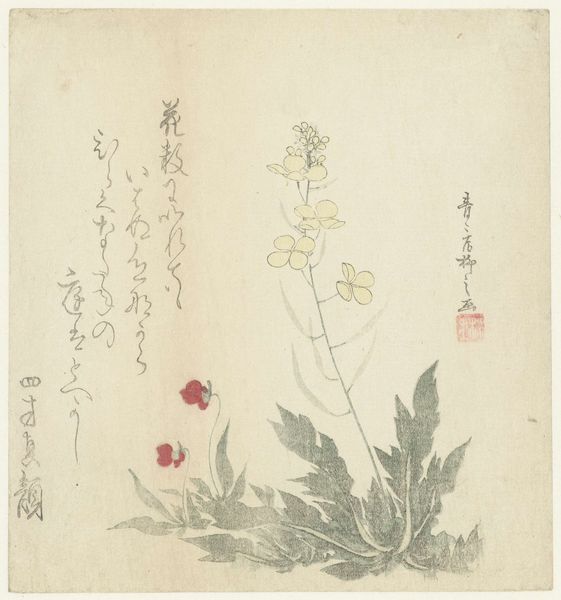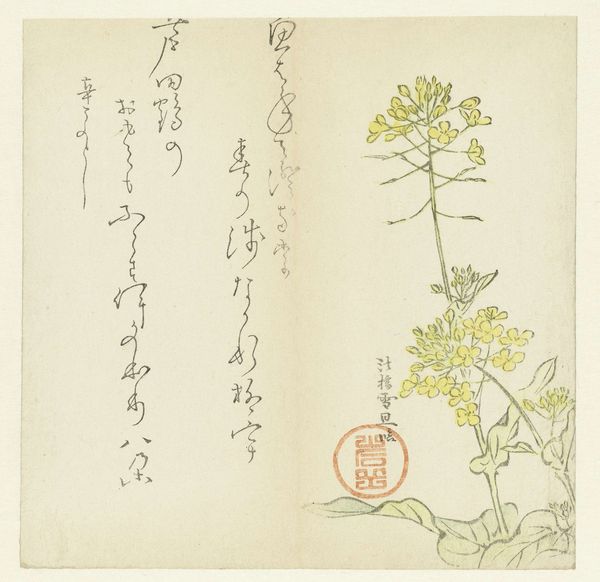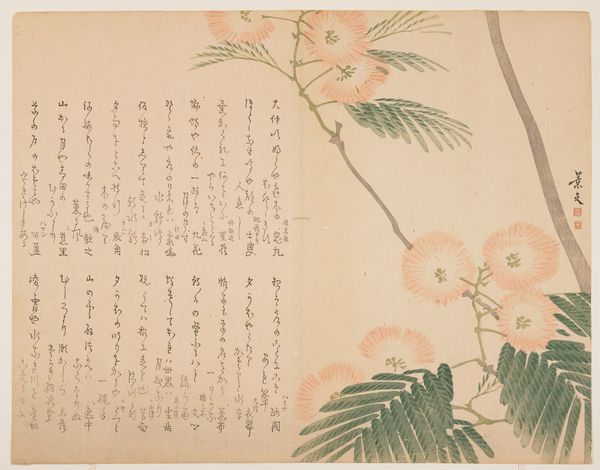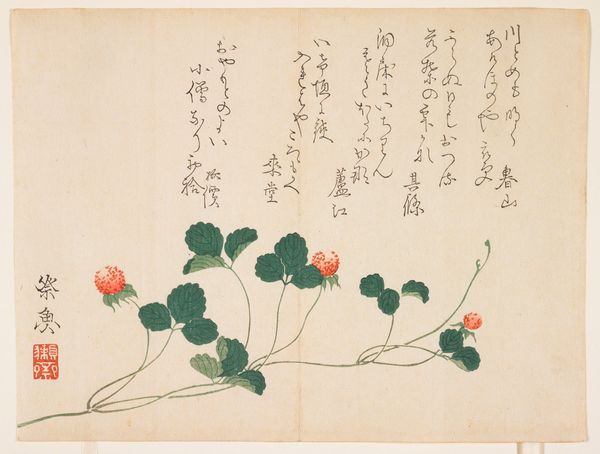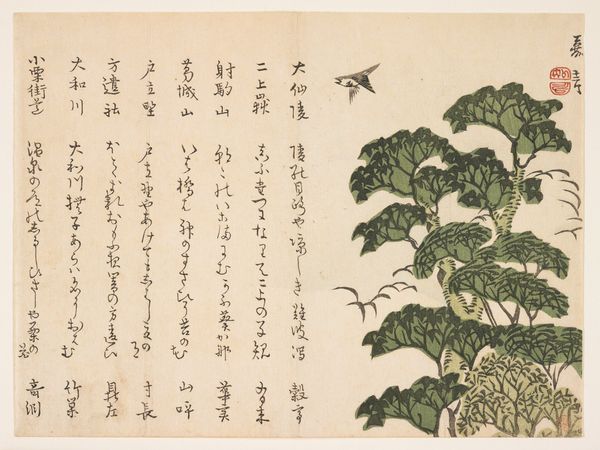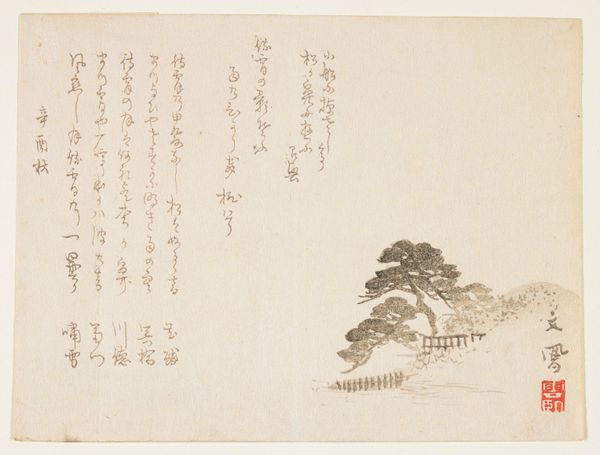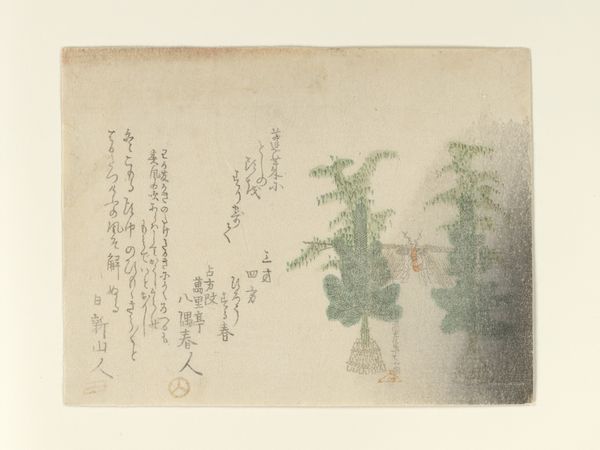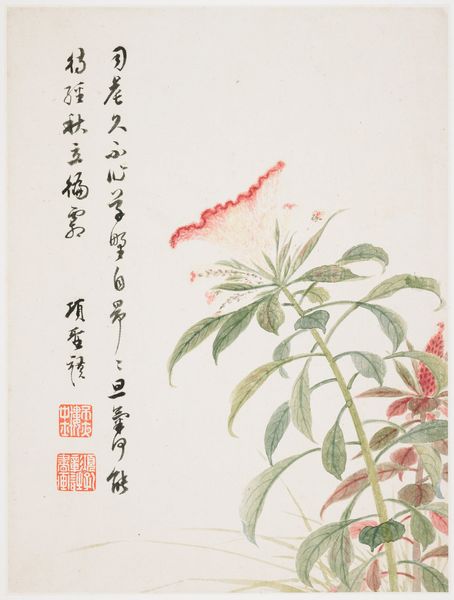
drawing, print, ink
#
drawing
# print
#
pen sketch
#
asian-art
#
landscape
#
ukiyo-e
#
figuration
#
ink
#
line
Dimensions: height 189 mm, width 186 mm
Copyright: Rijks Museum: Open Domain
Curator: Here, we see Hasegawa Settan's "Pine Trees," a print from 1836 rendered in ink. Look at how spare it is. What are your immediate impressions? Editor: Austere. I mean, the palette is minimal—mostly off-white space punctuated by gentle greens and the muted reds of pine needles. The lines are so fine, it’s almost like a whisper on the page. Curator: Settan uses these delicate lines to bring to life a landscape. The poem inscribed balances the representational image on the right; consider how, from an activist perspective, that careful equilibrium itself speaks to a desire for societal harmony so deeply entrenched in Edo-period art and thought. Editor: The poem is essential, definitely, but also... it makes me feel things. I think the emotion stems from its brevity, its incompleteness as an image; the entire picture breathes this very acute longing. Do you see it too? Curator: Yes, but longing layered with a sense of social duty. We're moving into a period of unrest; an artist such as Settan, steeped in artistic tradition, finds himself having to represent more than simply a pretty picture. Trees are very often metaphors, symbols. Editor: True. The symbolism within East Asian art is multilayered. The pines could represent steadfastness or longevity. Bamboo also appears to frame the composition so it becomes hard to consider one without the other as powerful visual markers of resilience. Curator: I think this "Pine Trees" acts as a powerful yet subtle assertion of cultural values. The artist finds harmony between text and nature in a changing world. Settan uses these old elements of line and verse to convey an eternal message, and by referencing Japanese writing culture also acknowledges artistic skill. Editor: An invitation to viewers, perhaps, to seek resilience and harmony in their own lives? So look around now; go find a spot beneath a strong tree; go smell some pines and ponder this ancient yearning for rootedness and connection. Curator: Agreed. A call to listen to the quiet voices of our cultural ancestors, still whispering through the trees.
Comments
No comments
Be the first to comment and join the conversation on the ultimate creative platform.
